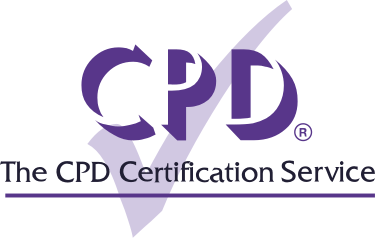Matrix Management is a relatively new and often complex method of management. However, when properly understood, it can be a dynamic approach that effectively responds to the challenges of modern-day leadership. This article explains the concept of matrix management, including how it works and the benefits of Continuing Professional Development (CPD) courses for successful management within a matrix framework.
What is matrix management?
Matrix management is a flexible organisational structure that usually involves employees reporting to multiple managers simultaneously rather than just one. This structure is designed to enable better collaboration across different functions, projects, or geographical locations within an organisation. In a matrix management system, employees often belong to both a functional group - such as marketing or finance - and a project team, such as a product development team. This allows for greater specialisation while also promoting cross-functional communication and teamwork.
How to manage successfully in a matrix structure
In a matrix structure, effective management is important for success and involves several key steps. To begin with, clear role definition is vital, ensuring that every team member and their supervisors understand their responsibilities within the matrix framework right from the start. This clarity lays the foundation for improved adaptability and streamlined operations. Additionally, establishing strong communication channels and building strong relationships across teams are equally important. Given the complexity of a matrix setup, open and effective communication is crucial and ensures that departments can collaborate seamlessly, sharing their needs and understanding their roles in the larger organisational context.
Leaders must adapt their leadership style, provide necessary support, and promote accountability among team members. Conflict resolution and flexibility are essential, as is a commitment to continuous improvement. Experts in every functional part of the company work together to address a project, challenge, or goal. In a matrix structure, project assignments are never permanent. This gives employees the ability to share their skills with a wider variety of peers.
By effectively fostering collaboration, managing resources efficiently, and staying organised, managers can navigate the complexities of matrix management and drive successful outcomes. Bringing together skilled professionals internally from different departments enables the organisation to capitalise on its resources rather than hiring new team members or recruiting external specialists for a project.
What are the main benefits and disadvantages of matrix management?
Matrix management offers many important benefits, but it also presents challenges that must be understood in order to implement the system effectively.
The Pros of Matrix Management:
- Enhanced Collaboration: Matrix management encourages collaboration across different functions and departments, leading to more diverse perspectives and innovative solutions.
- Role Specialisation: Employees can develop specialised skills and knowledge within their functional area while also gaining exposure to different projects and teams.
- Flexibility: The matrix structure allows for flexibility in resource allocation, enabling organisations to adapt quickly to changing priorities and market conditions.
- Efficient Use of Resources: By sharing resources across projects and functions, organisations can optimise resource utilisation and reduce costs.
The Cons of Matrix Management:
- Role Ambiguity: Employees may experience confusion or conflict over reporting lines and responsibilities, leading to role ambiguity and decreased accountability.
- Power Struggles: Multiple reporting relationships can create power struggles and conflicts between managers, especially if priorities clash or resources are limited.
- Communication Challenges: Coordinating across multiple teams and functions can result in communication breakdowns, delays, and misunderstandings.
- Decision-Making Complexity: With multiple stakeholders involved, decision-making processes in matrix management can become slow, bureaucratic, and prone to gridlock.
What is an example of matrix management?
A common example of matrix management can be observed within large organisations that operate on various projects or initiatives requiring input from multiple departments. For instance, consider a technology company developing a new software product.
In this scenario, employees might belong to both a functional department, such as engineering or marketing, and a project team dedicated to developing the new software. Each employee reports to both a functional manager (e.g., Engineering Manager, Marketing Manager) for their expertise in that domain and a project manager responsible for the specific software development project.
The engineering team members then report to the Engineering Manager for their day-to-day technical tasks and to the Project Manager for project-related tasks and coordination. Similarly, the marketing team members might report to both the Marketing Manager for marketing strategies and initiatives, and to the Project Manager for project-specific marketing activities.
This matrix structure allows for the pooling of resources and expertise from various departments to work collaboratively on the project while still maintaining functional expertise within each department. To succeed, it requires effective communication, coordination, and collaboration among team members and for managers to ensure successful project delivery without conflicts or misunderstandings.














